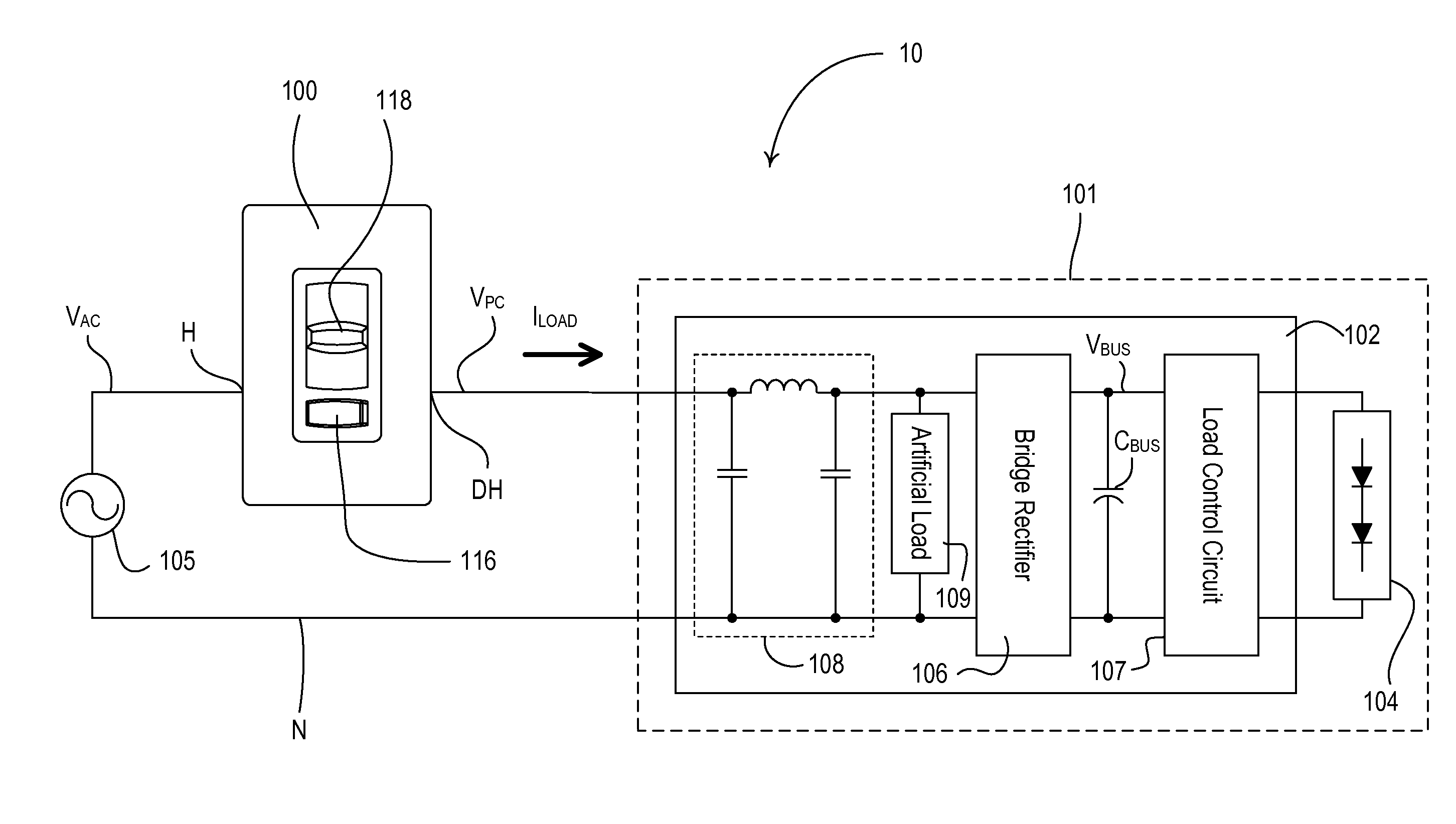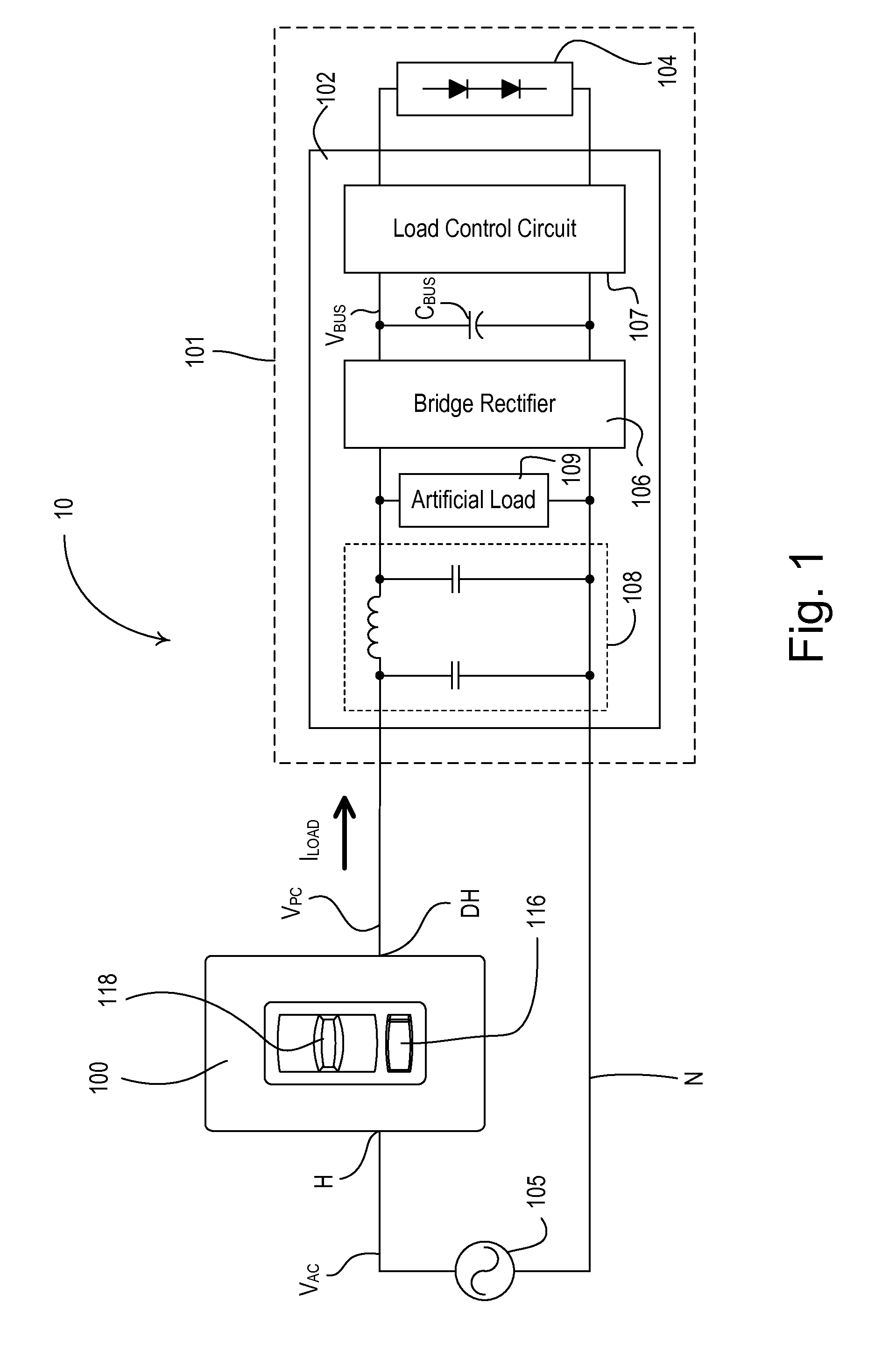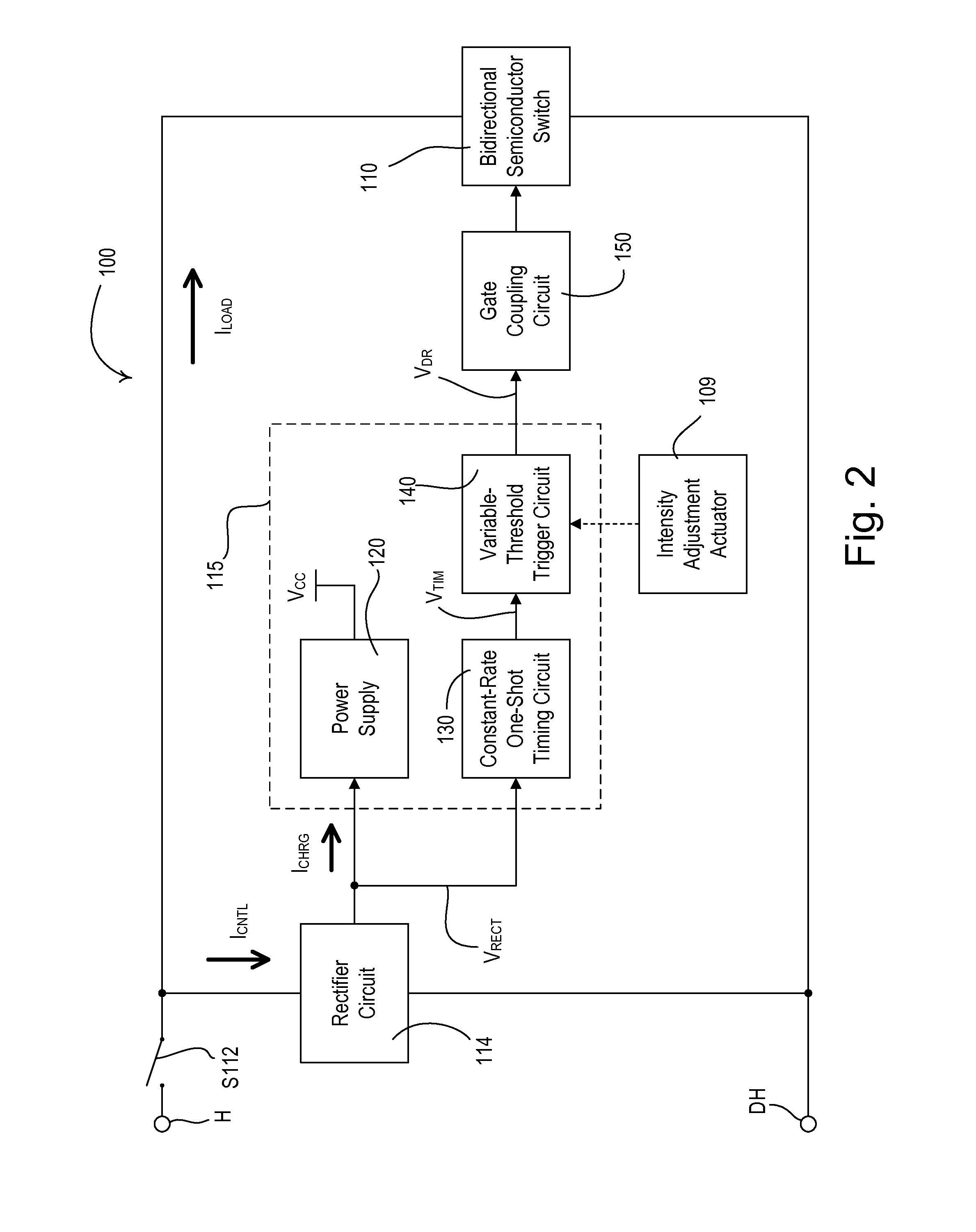Two-wire dimmer switch for low-power loads
- Summary
- Abstract
- Description
- Claims
- Application Information
AI Technical Summary
Benefits of technology
Problems solved by technology
Method used
Image
Examples
first embodiment
[0056] the dimmer switch 100 comprises an analog control circuit 115 including a power supply 120, a constant-rate one-shot timing circuit 130, and a variable-threshold trigger circuit 140 (i.e., a gate drive circuit). The control circuit 115 receives the rectified voltage VRECT from the rectifier circuit 114 and conducts a control current ICNTL through the load (i.e., the LED driver 102) in order to generate a drive voltage VAR for controlling the bidirectional semiconductor switch 110 to thus adjust the intensity of the LED light source 104 in response to the intensity adjustment actuator 118. The power supply 120 of the control circuit 115 conducts a charging current ICHRG through the LED driver 102 in order to generate a supply voltage VCC (e.g., approximately 11.4 volts). The charging current ICHRG of the power supply makes up a portion of the control current ICNTL of the control circuit 115.
[0057]The timing circuit 130 receives the supply voltage VCC and generates a timing vol...
third embodiment
[0081]FIG. 8 is a simplified timing diagram showing examples of the phase-control voltage VPC generated by the dimmer switch 300, the timing voltage VTIM, and the gate voltage VG for driving the FETs Q210A, Q210B according to the present invention. The phase-control voltage VPC has a magnitude equal to approximately the magnitude of the AC line voltage VAC of the AC power source 105 at the beginning of each half-cycle during a conduction time TCON, and has a magnitude of approximately zero volts during the rest of the half-cycle, i.e., during a non-conduction time TNC. To generate the phase-control voltage VPC, the gate drive circuit 340 drives the gate voltage VG high towards the reference voltage VREF at the beginning of each half-cycle, such that the FETs Q210A, Q210B are rendered conductive (as shown at time t1 in FIG. 8). At this time, the timing circuit 330 begins generating the timing voltage VTIM, which comprises a ramp voltage that increases in magnitude with respect to tim...
fifth embodiment
[0092]FIG. 12 is a simplified timing diagram showing examples of the phase-control voltage VPC generated by the dimmer switch 500 and the gate voltages VG1, VG2 for driving the FETs Q510A, Q510B, respectively. According to the present invention, the phase-control voltage VPC comprises a forward phase-control voltage. During the positive half-cycles, the first FET Q510A is rendered conductive and the second FET Q510B is rendered non-conductive when the first gate voltage VG1 increases from approximately zero volts to the nominal gate voltage VN (as shown at time t1), and the second gate voltage VG2 decreases from the nominal gate voltage VN to approximately zero volts. At this time, the dimmer switch 500 conducts the load current ILOAD to the LED driver 102 through the first FET Q510A and the body diode of the second FET Q510B. At the beginning of the negative half-cycles, the first FET Q510 remains conductive. However, since the second FET Q510B is non-conductive and the body diode ...
PUM
 Login to View More
Login to View More Abstract
Description
Claims
Application Information
 Login to View More
Login to View More - R&D
- Intellectual Property
- Life Sciences
- Materials
- Tech Scout
- Unparalleled Data Quality
- Higher Quality Content
- 60% Fewer Hallucinations
Browse by: Latest US Patents, China's latest patents, Technical Efficacy Thesaurus, Application Domain, Technology Topic, Popular Technical Reports.
© 2025 PatSnap. All rights reserved.Legal|Privacy policy|Modern Slavery Act Transparency Statement|Sitemap|About US| Contact US: help@patsnap.com



